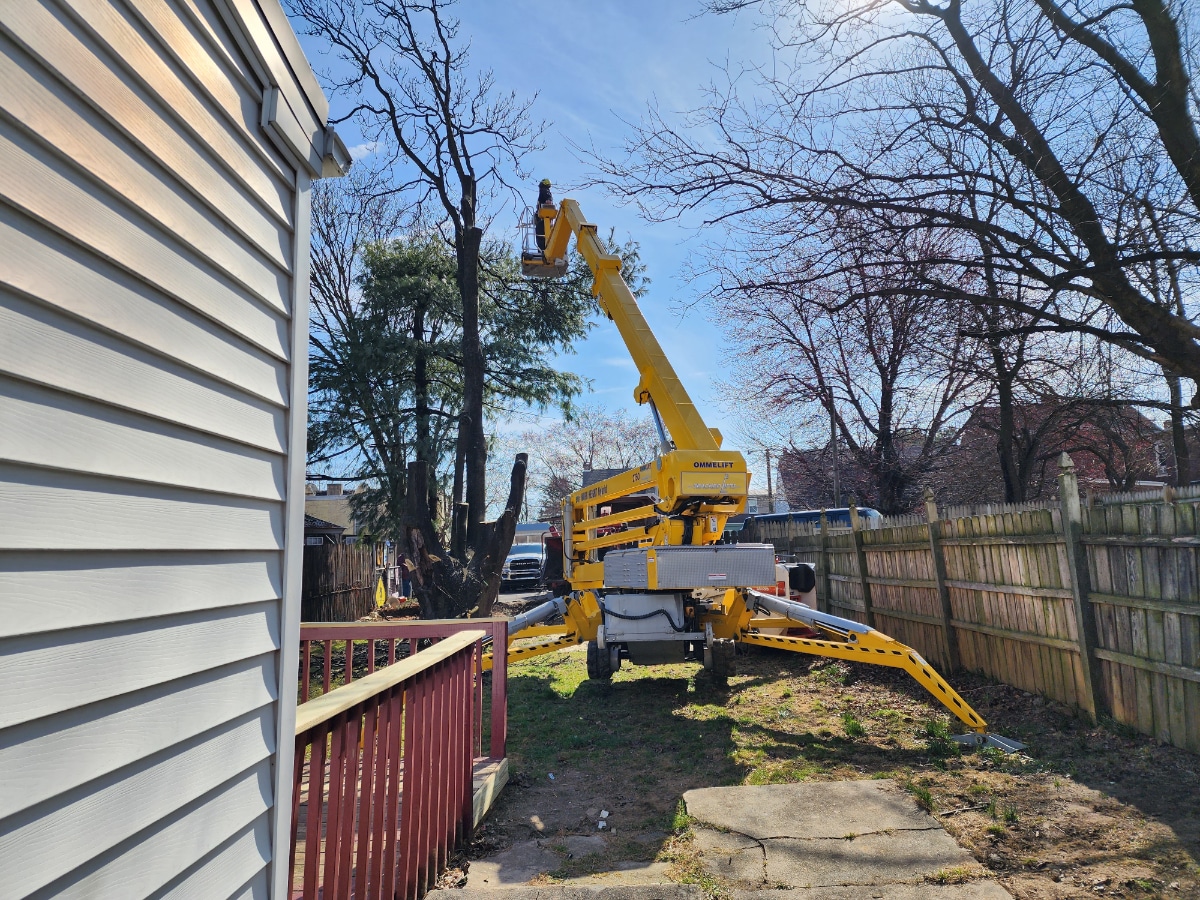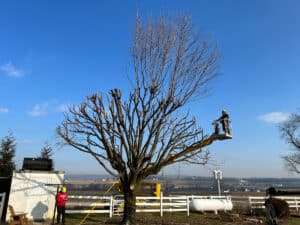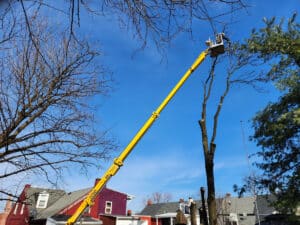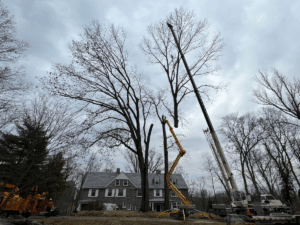Highlights
- Short Answer: You do not need a permit to cut down trees based solely on Pennsylvania state law, in most cases, but tree removal regulations frequently exist at the municipality level.
- Long Answer: You’d better check with your municipality. Rural property owners probably don’t need to worry about a permit to cut trees on private property, but you could be surprised.
- Lancaster City Tree Permits: Lancaster City (not county) requires a permit for trees that are in the public right of way (like hanging over the sidewalk) and require a permit for private removals and trimming of all trees over 12″ in diameter at chest height. We cover the details here.

Do I Need A Permit To Cut Down a Tree?
Let’s mention three things before we get into the details of tree permitting and tree removals.
First, because we’re based in Lancaster County (Intercourse, to be precise) we’ll focus this article on tree permitting issues that are specific to removing trees or trimming trees in and around Lancaster.
Second, since we’re in Pennsylvania, we’ll also focus here on state regulations. If you’re looking to remove trees in Colorado Denver, this isn’t the resource for you.
Finally, we’re a professional tree service by trade, and we pay close attention to the regulatory requirements of public or private property on which we work. When it comes to having us work on your trees, we can help you take care of any necessary permitting in advance.

Tree Permits In Pennsylvania (State Law)
The main thing to know about Pennsylvania state tree removal regulations is that they really only apply to those cutting trees for commercial purposes: cutting for firewood, timbering, and especially those hoping to harvest trees on public property. Pennsylvania as a state does not regulate private property tree work.
PA Title 58, Chapter 53.17 covers the regulation of “Cutting and removal of firewood from Commission property” under the auspices of the Fish and Boat Commission
(a) It is unlawful to cut or remove timber, trees, firewood or kindling from Commission property except in compliance with this section and the terms and conditions of a permit issued by the Executive Director or a designee.
(b) The Executive Director or a designee may issue permits to interested persons for the cutting and removal of dead firewood from Commission property when it is determined that cutting and removal is in the best interests of the Commission. The number of permits will be limited to prevent excessive cutting and removal and to better manage this resource.
(c) Firewood permits cost $50 per standard rough cord. A standard rough cord is a pile of stacked wood 4 by 4 by 8 feet (128 cubic feet, including air spaces).
§ 53.17 goes on with more detail, and you can find other relevant regulation of tree stands, management of where a tree originated (to reduce spread of the emerald ash borer, primarily), and public trees – but the primary take way for a private property owner is not to worry too much about state laws.
Tree Permits in Lancaster County
Lancaster County, PA does not regulate tree removals or permitting for tree work.
Tree Permits in Lancaster City
Lancaster City does require permits and insurance coverage for pruning trees or cutting down a tree (even on private property) and also for protected trees or street trees that might impact the public.
This is regulated by the City Tree Ordinance (Chapter 273). Lancaster City first regulates tree removals due to land development or for tree preservation purposes. We’ll skip those for now as they primarily relate to commercial use or larger development projects.
Lancaster City regulations consider two things: trees that are in or enter public spaces (including over public sidewalks or public land), and larger trees on private property:
For trees entering or in a public space, a permit is required for any tree service work.
For trees on private property:
(DBH stands for Diameter at Breast Height, which is the diameter of the tree trunk at 4.5 feet above the ground.)
- Removal of trees, replacement trees, or applying pesticides: A permit is required for all trees 12” DBH or larger that are within 20 feet of the public right of way, or are 24” or larger anywhere within the City. Trees of this size are considered protected by the City.
- Pruning and Root Pruning: A permit is required for the pruning of any tree roots 2” in diameter or larger for trees 12” DBH or larger that are within 20 feet of the public right of way, or are 24” or larger anywhere within the City.
Lancaster City’s tree-permitting page covers this in detail and includes the permit application.
Lancaster City also employs a City Arborist who is responsible for public trees and the effort to plant trees in the city, as well as examining and even requiring removal or trimming of private trees and dead trees. The trees primary goal is to provide tree protection and preserve tall trees, shade trees, heritage trees, or really any particular tree the City Arborist deems of value to the public – even on private properties. Factors like size, location, and tree species all play a role in this decision.
Additionally, all private arborists operating in the City should carry liability insurance with a minimum of $500,000 coverage.

Other Common Tree Permitting Questions
Whose responsibility is a tree that falls on my property?
Responsibility for a fallen tree typically lies with the owner of the property where the tree was originally standing. If the tree falls due to negligence, such as lack of maintenance, the owner of the tree may be held liable for any property damage caused and face legal consequences.
What if a tree is on a neighboring property, but I think it’s a problem for me?
Unless you live in a municipality with strong code enforcement, there may not be anything you can do about a tree on a neighbor’s property. Double check your property lines and get in touch with the tree owner to see if you can work it out amicably first.
What if my neighbor’s tree falls on my property?
Trees growing near or on property lines can cause some disagreements. If your neighbor’s tree falls on your own property, chances are they are responsible for cleanup. If your property is damaged by significant trees falling on your buildings or personal property, your neighbor may be held liable.
How much does it cost to have a tree removed?
The price of a tree removal is covered in detail in another blog post from Sunny Slope!
And learn how much a tree stump removal costs, too.





